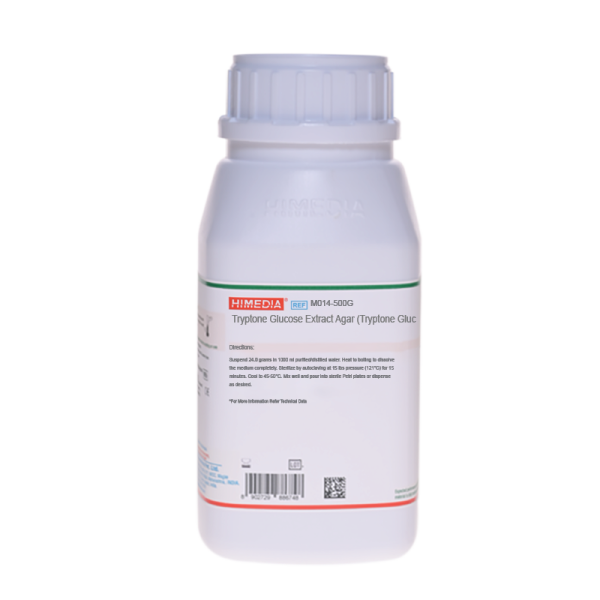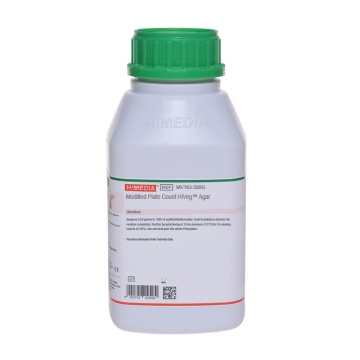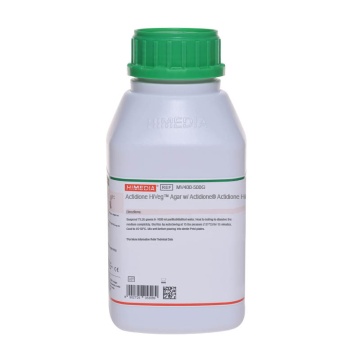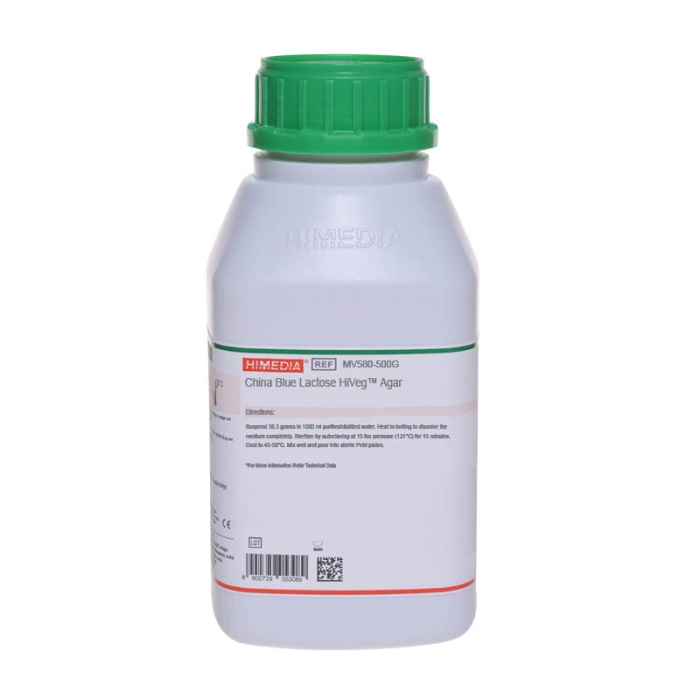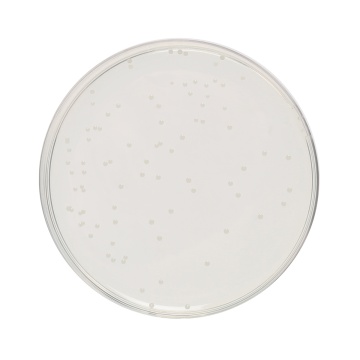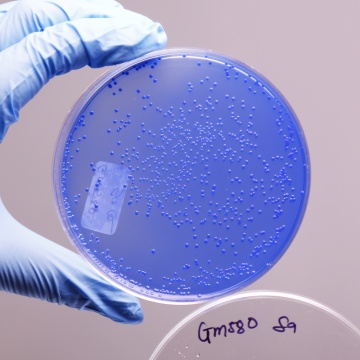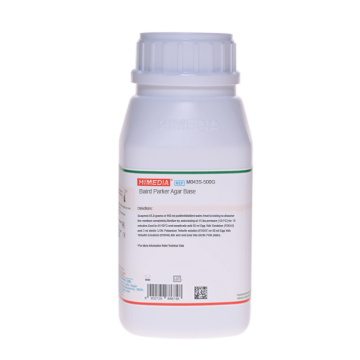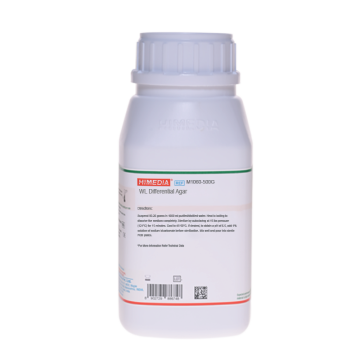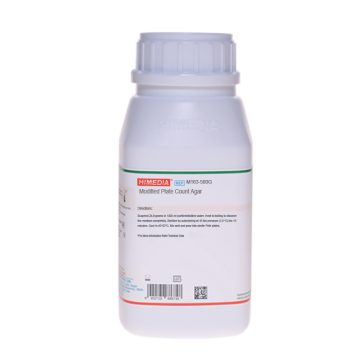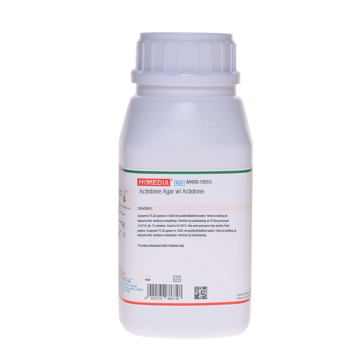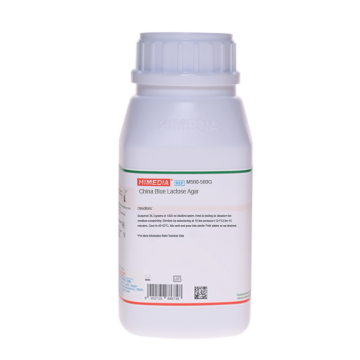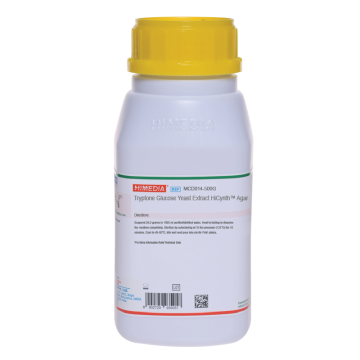 Your enquiry has been submitted
Your enquiry has been submitted
Tryptone Glucose Extract Agar (Tryptone Glucose Yeast Extract Agar)
Intended Use
Recommended for enumeration of bacteria in water, air, milk and dairy products.
Composition
| Ingredients | g/L |
|---|---|
| Tryptone | 5.000 |
| Yeast extract | 3.000 |
| Dextrose (Glucose) | 1.000 |
| Agar | 15.000 |
Final pH (at 25°C): 7.0±0.2
Formula adjusted, standardized to suit performance parameters
Directions
Suspend 24.0 grams in 1000 ml purified/distilled water. Heat to boiling to dissolve the medium completely. Sterilize by autoclaving at 15 lbs pressure (121°C) for 15 minutes. Cool to 45-50°C. Mix well and pour into sterile Petri plates or dispense as desired.
Principle And Interpretation
Tryptone Glucose Yeast Extract Agar was originally developed by Bowers and Hucker (1) which they called as Tryptone Glucose Skim Milk Agar. Later on it was modified to the present composition for the cultivation and enumeration of bacteria in air, water (2), milk and dairy products (3). Various authors have studied different aspects of this medium like study of thermophilic bacteria in milk (4), influence of incubation temperature (5) etc. It is used as a standard medium for the bacteriological plate count of milk and dairy products (6).
Tryptone, yeast extract provide nitrogenous and carbonaceous compounds, long chain amino acids, vitamin B complex and other essential growth nutrients. Glucose is the energy source. For the enumeration purposes, pour plate method is suggested. Medium must be quickly poured into Petri dishes if milk sample is to be tested, because the milk may get flocculated if the medium remains hot for longer period of time.
Type of Specimen
Dairy samples; Water samples
Specimen Collection and Handling
For water samples, follow appropriate techniques for sample collection, processing as per guidelines and local standards (2). For dairy samples, follow appropriate techniques for sample collection and processing as per guidelines (3). After use, contaminated materials must be sterilized by autoclaving before discarding.
Warning and Precautions
Read the label before opening the container. Wear protective gloves/protective clothing/eye protection/ face protection. Follow good microbiological lab practices while handling specimens and culture. Standard precautions as per established guidelines should be followed while handling specimens. Safety guidelines may be referred in individual safety data sheets.
Limitations
- Individual organisms differ in their growth requirement and may show variable growth patterns on the medium.
- Further biochemical identification is necessary for confirmation.
- Each lot of the medium has been tested for the organisms specified on the COA. It is recommended to users to validate the medium for any specific microorganism other than mentioned in the COA based on the user's unique requirement.
Performance and Evaluation
Performance of the medium is expected when used as per the direction on the label within the expiry period when stored at recommended temperature.
Quality Control
Appearance: Cream to yellow homogeneous free flowing powder
Gelling: Firm, comparable with 1.5% Agar gel
Colour and Clarity of prepared medium: Light yellow coloured clear to slightly opalescent gel forms in Petri plates.
Reaction: Reaction of 2.4% w/v aqueous solution at 25°C. pH: 7.0±0.2
pH: 6.80-7.20
Cultural Response
Cultural characteristics observed after an incubation at 35-37°C for 18-48 hours.
| Organism | Inoculum (CFU) | Growth | Recovery |
|---|---|---|---|
| ** Bacillus spizizenii ATCC 6633 (00003*) | 50-100 | good-luxuriant | >=70% |
| # Klebsiella aerogenes ATCC 13048 (00175*) | 50-100 | good-luxuriant | >=70% |
| Escherichia coli ATCC 25922 (00013*) | 50-100 | good-luxuriant | >=70% |
| Enterococcus faecalis ATCC 29212 (00087*) | 50-100 | good-luxuriant | >=70% |
| Lactobacillus casei ATCC 9595 | 50-100 | good-luxuriant | >=70% |
| Pseudomonas aeruginosa ATCC 27853 (00025*) | 50-100 | good-luxuriant | >=70% |
| Staphylococcus aureus subsp.aureus ATCC 25923 (00034*) | 50-100 | good-luxuriant | >=70% |
Key: (*) Corresponding WDCM numbers. (#) Formerly known as Enterobacter aerogenes **Formerly known as Bacillus subtilis subsp. spizizenii
Storage and Shelf Life
Store between 10-30°C in a tightly closed container and the prepared medium at 20-30°C. Use before expiry date on the label. On opening, product should be properly stored dry, after tightly capping the bottle in order to prevent lump formation due to the hygroscopic nature of the product. Improper storage of the product may lead to lump formation. Store in dry ventilated area protected from extremes of temperature and sources of ignition Seal the container tightly after use. Product performance is best if used within stated expiry period.
Disposal
User must ensure safe disposal by autoclaving and/or incineration of used or unusable preparations of this product. Follow established laboratory procedures in disposing of infectious materials and material that comes into contact with sample must be decontaminated and disposed of in accordance with current laboratory techniques (7,8).
Reference
- Bowers and Hucker, 1935, Tech. Bull., 228, N.Y.State Agr. Expt. Station.
- Lipps WC, Braun-Howland EB, Baxter TE,eds. Standard methods for the Examination of Water and Wastewater, 24th ed. Washington DC:APHA Press; 2023.
- Wehr H. M. and Frank J. H., 2004, Standard Methods for the Microbiological Examination of Dairy Products, 17th Ed., APHA Inc., Washington, D.C.
- Pickett, 1928, Tech. Bull. 147, N.Y. State Agr. Expt. Station.
- Dennis and Weiser, 1937, J.Dairy Science, 20 : 445.
- Abele C. А., Am. J. Pub. Health, 1939, 29: 821.
- Isenberg, H.D. Clinical Microbiology Procedures Handbook 2nd Edition.
- Jorgensen, J.H., Pfaller, M.A., Carroll, K.C., Funke, G., Landry, M.L., Richter, S.S and Warnock., D.W. (2015) Manual of Clinical Microbiology, 11th Edition. Vol. 1.
| Product Name | Tryptone Glucose Extract Agar (Tryptone Glucose Yeast Extract Agar) |
|---|---|
| SKU | M014 |
| Product Type | Regular |
| Physical Form | Powder |
| Origin | Animal |
| Packaging type | HDPE |
| References | 1. Bowers and Hucker, 1935, Tech. Bull., 228, N.Y.State Agr. Expt. Station. 2.Eaton A. D., Clesceri L. S. and Greenberg A. W., (Eds.), 2005, Standard Methods for the Examination of Water andWastewater, 21st Ed., APHA, Washington, D.C. 3.Wehr H. M. and Frank J. H., 2004, Standard Methods for the Microbiological Examination of Dairy Products, 17th Ed.,APHA Inc., Washington, D.C. 4.Pickett, 1928, Tech. Bull. 147, N.Y. State Agr. Expt. Station. 5.Dennis and Weiser, 1937, J.Dairy Science, 20 : 445. 6.Abele C. A., Am. J. Pub. Health, 1939, 29: 821. |
| Customized Product Available | No |



